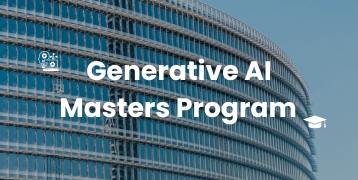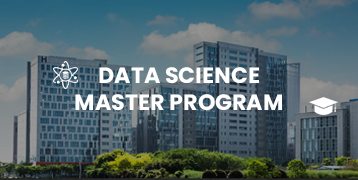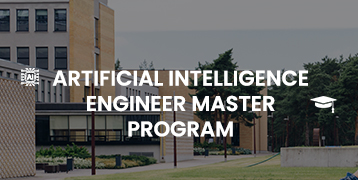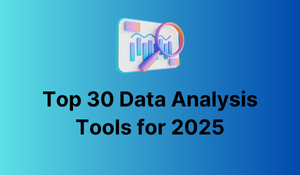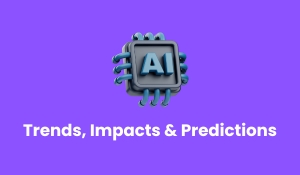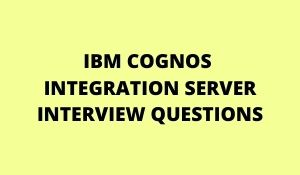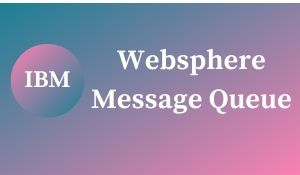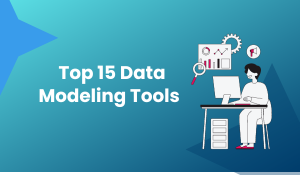
Introduction
Data modeling is the blueprint of the digital world, a structured framework that organizes information for optimal understanding and utilization. At its core, data modeling involves defining how data is stored, accessed, and related within a database, facilitating efficient management and retrieval. This crucial process transcends industries, empowering businesses to make informed decisions based on a clear understanding of their data landscape. From conceptualizing entities and relationships to creating a visual representation, data modeling ensures coherence and integrity in the data ecosystem. In essence, it transforms complex datasets into a comprehensible structure, fostering precision, scalability, and agility in the ever-evolving realm of information management.
Data modeling is a method of creating a model for the data to be kept in a database. It describes the data items and the rules and associations that govern them. There are a variety of data modeling tools available that assist you in creating a database structure from diagrams, making it simple to develop a flawless data structure.
The top 15 strong data modeling tools you need to know in 2024 are listed below.

1. ER/Studio Data Architect:
ER/Studio Data Architect stands at the forefront of data modeling excellence, empowering professionals to architect, design, and optimize their data landscapes with unparalleled precision. This robust tool offers a seamless blend of logical and physical data modeling, providing a holistic view of complex data structures. With an intuitive and user-friendly interface, ER/Studio Data Architect facilitates the creation of visually compelling and detailed data models. Its collaborative features streamline teamwork, allowing teams to work seamlessly on intricate database projects. Whether you’re a seasoned database professional or a novice, ER/Studio Data Architect’s comprehensive toolkit ensures that you can effortlessly design, visualize, and document your data architecture.
Key Features:
- Logical and Physical Data Modeling
- Intuitive User Interface
- Collaboration Capabilities
- Comprehensive Toolkit
- Visual Documentation
2. Microsoft Visio:
Transform your ideas into visual masterpieces with Microsoft Visio, the ultimate diagramming and flowchart tool. Whether you’re mapping out processes, designing organizational structures, or creating dynamic flowcharts, Visio provides an intuitive canvas for bringing your concepts to life.
Visio’s user-friendly interface and vast template library make it accessible to users of all levels. Seamlessly integrated with other Microsoft products, it’s the go-to choice for those in the Microsoft ecosystem. Collaboration is a breeze as you work together in real time, refining and perfecting your visualizations.
Key Features:
- Versatile Diagramming
- Extensive Template Library
- Seamless Microsoft Integration
- Real-Time Collaboration
3. Oracle SQL Developer Data Modeler:
Oracle SQL Developer Data Modeler is the key to creating strong and efficient database designs. This powerful tool is designed for Oracle databases and provides a full set of capabilities to simplify the building and maintenance of complicated data structures. With logical and physical modeling capabilities, you can move from concept to execution with ease. Oracle SQL Developer Data Modeler enables database administrators and developers to view complex relationships, assuring optimal database performance. Its user-friendly interface and extensive tool set ease the process, making it accessible to both professionals and novices.
Key Features:
- Tailored for Oracle Databases
- Logical and Physical Modeling
- Advanced Design Tools
- Seamless Integration
4. DbVisualizer:
DbVisualizer, a great tool for open-source fans and database pros, can help you on your database journey. DbVisualizer converts difficult data discovery into a simplified, visual experience by supporting several databases and providing an easy interface.
Unleash the power of visualization as you navigate across various database systems with ease, obtaining unmatched insights into your data. The open-source compatibility of DbVisualizer assures flexibility, making it an excellent alternative for those who appreciate both simplicity and capability.
Key Features:
- Cross-Database Support
- Intuitive Interface
- Open-Source Compatibility
- Visual Data Exploration
| Learn more information from the GoLogica “Data Modeling Training“ |
5. Power Designer by SAP:
PowerDesigner, a cutting-edge SAP solution, will help you take your data management to new heights. This all-inclusive solution goes beyond standard data modeling by providing a complete approach to enterprise-level data architecture and business process optimization. Use PowerDesigner’s logical and physical data modeling features to increase design precision. It goes beyond data by seamlessly integrating business process modeling and effect analysis, resulting in a single platform for strategic planning. PowerDesigner enables businesses to traverse the intricacies of data environments coherently and efficiently.
Key Features:
- Logical and Physical Data Modeling
- Business Process Modeling
- Impact Analysis
- Enterprise-Level Capabilities
6. IBM InfoSphere Data Architect:
IBM InfoSphere Data Architect, the pinnacle of data management innovation, will transform your approach to data modeling and design. This dynamic tool sets the benchmark for adaptability and integration capabilities, providing a single solution for enterprises navigating the intricacies of modern data environments. InfoSphere Data Architect enables enterprises to visualize, build, and optimize data structures with unrivaled precision. It promotes coherence and efficiency across the whole data lifecycle by seamlessly combining logical and physical data models. This application provides a complete platform for organizations devoted to being at the vanguard of the data-driven future, whether unraveling complicated relationships or strategically building data architecture.
Key Features:
- Versatile Data Modeling
- Robust Integration Capabilities
- Logical and Physical Modeling
- Strategic Data Architecture
7. Lucidchart:
Lucidchart is your key to translating difficult ideas into clear, captivating visuals. Lucidchart, as a dynamic diagramming and collaboration tool, enables teams to fluidly ideate, plan, and communicate regardless of physical distance. With Lucidchart’s simple interface and huge template collection, you can create anything from flowcharts to mind maps. Real-time collaboration fosters teamwork and accelerates project schedules. Lucidchart is more than simply a tool; it’s a creative center where ideas come to life, making it a valuable asset for teams across all sectors.
Key Features:
- Versatile Diagramming
- Real-time Collaboration
- Intuitive Interface
- Extensive Template Library
8. PgModeler:
PgModeler’s easy interface allows you to easily view complicated database structures, allowing you to unleash your creativity and accuracy. This tool enables both logical and physical data modeling, ensuring that database design is thorough. With PgModeler, you can confidently realize your database vision since it fits smoothly into PostgreSQL setups, providing a dynamic foundation for creating efficient and scalable databases.
Key Features:
- PostgreSQL Database Modeling
- Intuitive Interface
- Logical and Physical Data Modeling
- Seamless Integration
Related Courses
| Course Name | Enroll Now |
|---|---|
| NoSQL Training | Enroll Now |
| Transformational Leadership Training | Enroll Now |
| MongoDB Admin Training | Enroll Now |
| Microsoft Power BI Training | Online Training | Enroll Now |
9. Erwin Data Modeler:
Erwin Data Modeler, the pinnacle of precision in database architecture, will empower your data journey. This sophisticated tool, designed for data professionals, redefines the landscape of data modeling by providing a broad set of capabilities for architecting, visualizing, and optimizing complicated data structures. Witness the seamless integration of logical and physical data modeling, resulting in a unified platform for developing and administering databases. The user-friendly interface of Erwin Data Modeler simplifies the complex work of translating abstract thoughts into practical, well-defined data structures. Whether you’re an experienced data architect or a complete beginner.
Key Features:
- Logical and Physical Data Modeling
- Intuitive Interface
- Comprehensive Design Suite
10. METABASE:
Metabase’s straightforward interface provides a seamless experience, making it simple to produce appealing visualizations, dashboards, and shared reports. Connect to numerous data sources with ease, allowing you to discover useful insights without requiring substantial technical knowledge. With Metabase’s interactive and exploratory features, you can dive into your data, ask questions, and get quick answers. Metabase, a user-friendly business intelligence platform created to democratize data access, will take you on a journey of simplified data exploration and visualization. Metabase gives you the power of data insights, whether you’re a data analyst, a business user, or a decision-maker.
Key Features:
- User-Friendly Interface
- Seamless Data Exploration
- Interactive Dashboards
- Wide Data Source Compatibility
11. DATAGRIP :
Step into the future of database development with DataGrip, the ultimate IDE crafted to simplify and elevate your database workflows. Tailored for developers, analysts, and DBAs, DataGrip integrates seamlessly with various databases, offering a comprehensive solution for efficient and intuitive data management. Navigate your database structures with precision using DataGrip’s smart code completion and analysis features. Experience the power of a unified IDE that supports multiple database environments, providing unparalleled flexibility. From query execution to advanced coding assistance, DataGrip streamlines the entire database development lifecycle.
Key Features:
- Smart Code Completion
- Unified IDE for Multiple Databases
- Advanced Coding Assistance
- Efficient Database Management
12. Sparx Systems Enterprise Architect:
Experience the seamless synergy of visual modeling and comprehensive design using Enterprise Architect’s user-friendly interface. This versatile application supports an extensive array of modeling languages and notations, providing a unified platform for every stage of your project – from envisioning initial concepts to constructing intricate architectures.
Key Features:
- Comprehensive Modeling and Design
- Intuitive Interface
- Wide Language and Notation Support
- Seamless Collaboration
13. Archi:
Archi, a sophisticated open-source tool for corporate architecture, is your gateway to kickstarting strategic planning and fostering innovation. Tailored for architects, planners, and decision-makers, Archi serves as a comprehensive platform for visualizing, assessing, and enhancing intricate systems and processes. Its user-friendly interface and robust feature set empower users to create intricate and visually engaging business architecture models. Archi accommodates a diverse range of perspectives, spanning from business processes to application landscapes, positioning itself as a valuable asset for enterprises navigating the realms of digital transformation. Elevate your strategic planning and architectural endeavors with Archi’s intuitive design and expansive capabilities.
Key Features:
- Open-Source Excellence
- User-Friendly Interface
- Comprehensive Modeling
- Strategic Planning Support
14. GenMyModel:
GenMyModel, the cloud-based modeling tool that is redefining the way you build and visualize software systems, will take you on a journey of seamless collaboration and innovation. GenMyModel, designed for architects, developers, and teams, goes beyond typical modeling tools with its user-friendly interface and real-time collaboration features. GenMyModel allows users to simply generate complicated models while supporting a broad range of notations and languages. Break free from the limitations of traditional modeling tools by designing and collaborating in the cloud.

Key Features:
- Cloud-Based Modeling
- Intuitive Interface
- Real-Time Collaboration
- Multi-Notation Support
15. DTM Data Modeller:
DTM Data Modeler, a powerful and easy-to-use tool precisely designed for architects, developers, and database experts, will elevate your database design experience. This complete data modeling system enables users to precisely create, display, and manage complicated data structures. The user-friendly interface of DTM Data Modeler simplifies the complex process of translating abstract notions into well-defined database designs. It provides a single platform for effective database design by supporting both logical and physical data modeling. DTM Data Modeler is a vital instrument for professionals navigating the intricacies of current data environments, allowing them to easily navigate connections, build entities, and improve database performance.
Key Features:
- Logical and Physical Data Modeling
- User-Friendly Interface
- Comprehensive Design Capabilities
- Efficient Database Management
Related Articles:
🎯 Data Modeling Tutorials
🎯 7 Data Modeling Techniques and Concepts for Business
🎯 Business Leaders Need to Know About Data Modeling
🎯 Importance of Data modeling and using different Technologies in Data Modeling
🎯 Overview, Basic Concept, and Types in Details On Data Modelling
🎯 Data Modeling Interview questions and answers – 2024

